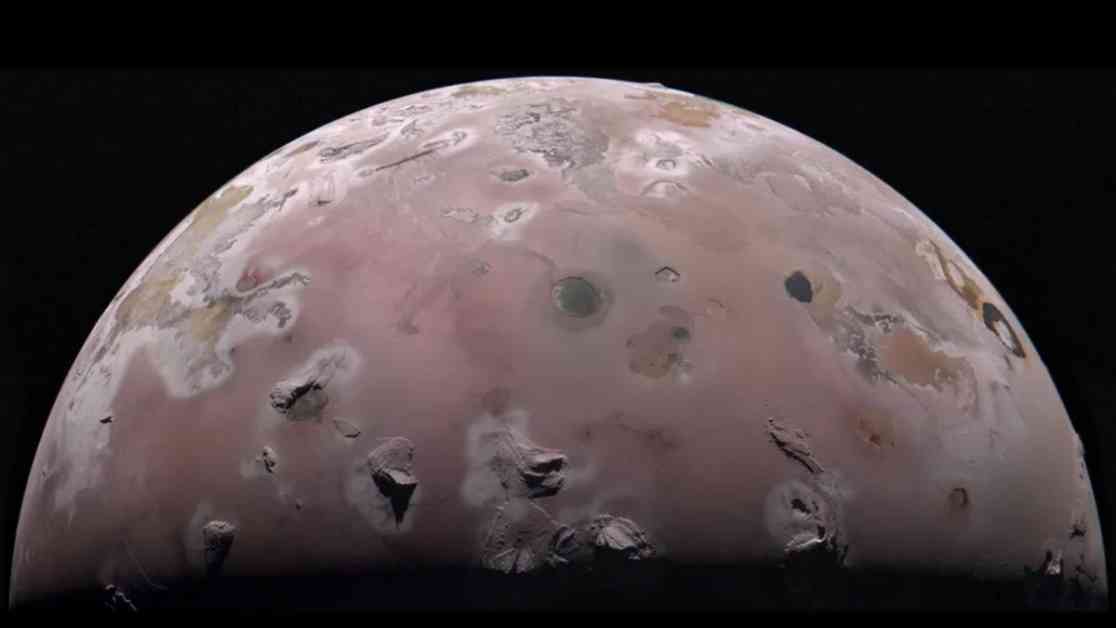Io, the volcanic moon of Jupiter, has recently unleashed one of the most powerful volcanic events ever witnessed in the solar system. With around 400 volcanoes dotting its surface, Io’s extreme activity is fueled by the gravitational forces of Jupiter, a phenomenon known as “tidal flexing.” This incredible display of volcanic power was captured by a NASA spacecraft orbiting Jupiter, shedding light on the fiery nature of this tormented moon.
Observations from the Juno spacecraft during its latest flyby on December 27, 2024, revealed a massive new infrared hot spot in Io’s southern hemisphere. This hot spot, generated by a single massive magma chamber beneath the moon’s surface, was emitting an astonishing 80 trillion watts of energy. To put this into perspective, that’s six times the total energy output of all the world’s power plants combined. Scott Bolton, a space physicist at the Southwest Research Institute and principal investigator of the Juno mission, expressed his awe at this discovery, calling it the most powerful volcanic event ever recorded on the most volcanic world in our solar system.
The newly observed hot spot is composed of multiple eruptions originating from a single massive magma chamber, radiating immense amounts of energy into space. While Juno’s instruments were able to capture images of this phenomenon, a large dark patch on Io’s surface hinted at solidified lava flows resulting from the eruption. This dark patch, estimated to cover an area of around 40,000 square miles, surpasses even Earth’s largest freshwater lake, Lake Superior, in size.
Understanding Io’s Extreme Volcanism
Io’s intense volcanic activity is a consequence of tidal flexing caused by Jupiter’s massive gravitational pull. This relentless squeezing and releasing of the moon’s surface superheats the rock below, turning it into magma that erupts onto the surface. Unlike Earth’s volcanic activity, driven by internal heating from the planet’s core, Io’s volcanism is a product of external forces acting upon it.
For years, scientists speculated that Io’s entire subsurface was a vast magma ocean. However, recent research has debunked this theory, revealing that specific areas like the newly discovered magma chamber accumulate magma beneath visible volcanic features on the moon. The upcoming closer flyby of Io by the Juno spacecraft on March 3 promises to provide further insights into the inner workings of this magma chamber and potentially shed light on volcanism across the solar system.
Expert Insights and Future Discoveries
Harry, a senior staff writer at Live Science, notes the significance of this recent discovery in expanding our understanding of volcanic processes not only on Io but potentially on other worlds as well. His expertise in space exploration and planetary science brings a unique perspective to the unfolding events on Jupiter’s volcanic moon.
As we await the next phase of research and exploration of Io’s volcanic activity, the revelations from Juno’s observations serve as a testament to the awe-inspiring forces at play in our solar system. The mysteries of Io’s fiery landscape continue to captivate scientists and space enthusiasts alike, offering a glimpse into the dynamic and ever-evolving nature of our celestial neighbors.










